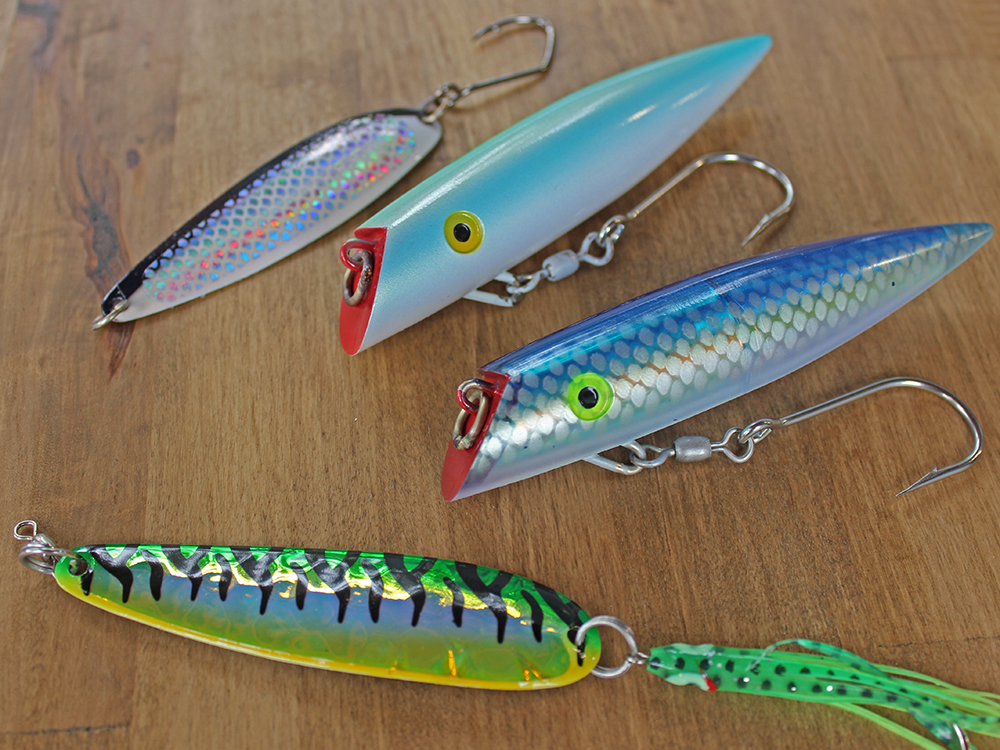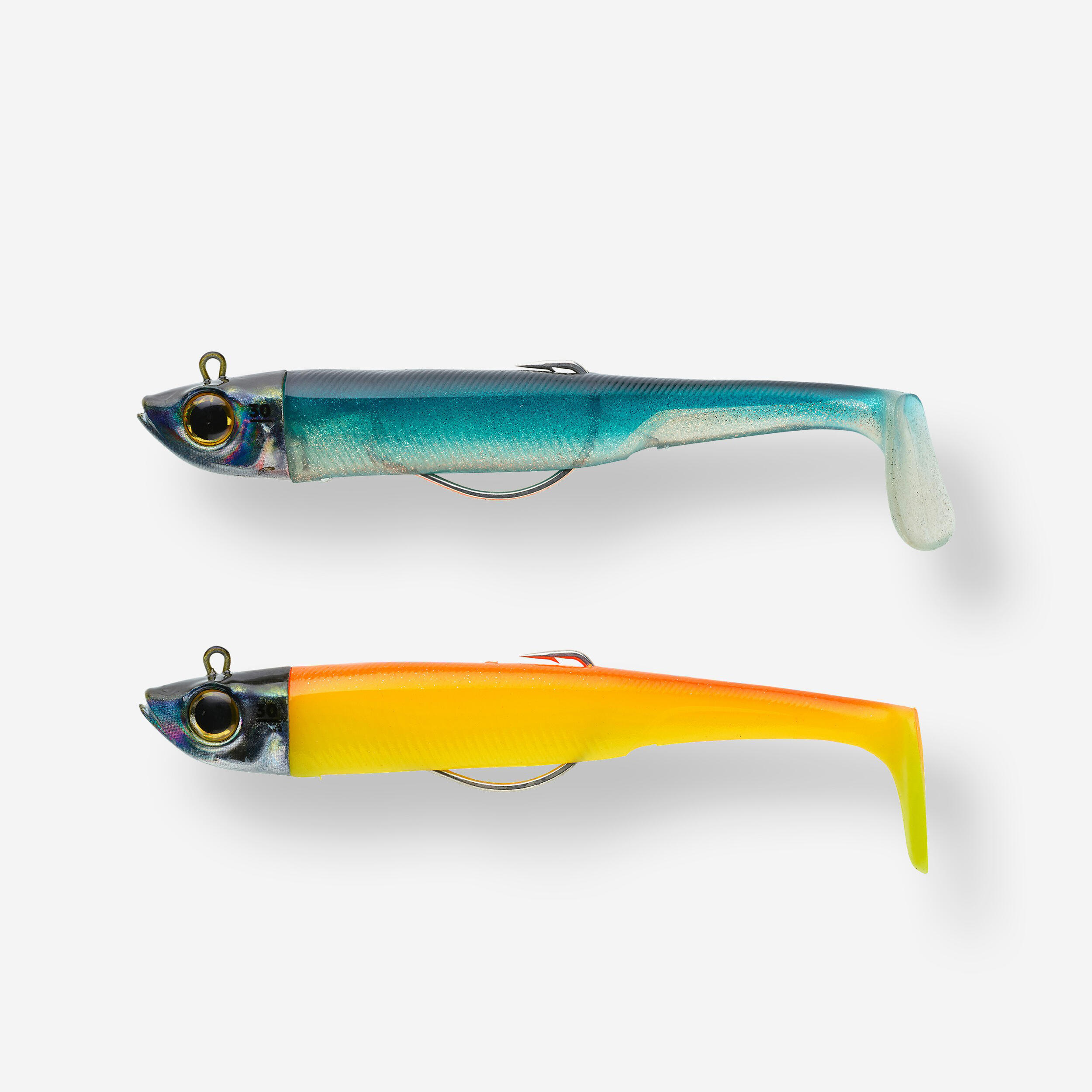How to Select Fishing Lures for Different Fish Species
Wiki Article
The Ultimate Resource for Beginners: Exactly How to Utilize Fishing Lures Properly
Understanding how to make use of Fishing Lures effectively can dramatically enhance a novice's Fishing experience. By checking out different sorts of Lures and their applications, beginner fishermens can better match their strategies to details fish types and conditions. Variables such as color, size, and seasonal variations play an essential duty in Lures option. Many novices usually neglect common blunders that can impede their success. Discovering these understandings might result in even more productive Fishing outings.Comprehending Different Kinds Of Fishing Lures
Fishing draws come in a selection of shapes and sizes, comprehending their unique kinds is important for any kind of newbie angler. Lures can usually be classified right into 3 major kinds: difficult baits, soft baits, and jigs. Hard lures, such as crankbaits and topwater Lures, are made from materials like plastic or wood and generate sound or movement that draws in fish. Soft lures, commonly made from rubber or silicone, resemble the appearance and look of minnows or worms, giving a more natural presentation. Jigs, which contain a heavy head and a hook, can be dressed with a range of products to tempt numerous species. Each sort of Lures offers a details objective and can be efficient in various Fishing conditions. By familiarizing themselves with these categories, novice fishermens can make informed selections when picking Lures for their Fishing adventures.Matching Lures to Target Types
Choosing the appropriate Lures is essential for effectively targeting specific fish species. Various fish have actually differed feeding habitats, habits, and choices, which dictate the types of Lures that will be most reliable. Bass are often drawn in to soft plastics and spinnerbaits, while trout might respond much better to spoons or little jigs. Saltwater species like redfish and snook normally favor topwater plugs or live lure replicas.Recognizing the actions of the target types is important; for example, aggressive fish are drawn to Lures that imitate injured or leaving victim. Color and dimension also play significant roles in Lures selection, as these elements can affect visibility and interest fish in different water conditions. By thoroughly matching Lures to the target types, fishermens can enhance their possibilities of an effective catch and take pleasure in a much more fulfilling Fishing experience.
Vital Techniques for Utilizing Lures
Understanding necessary techniques for utilizing Lures considerably improves a fishermen's effectiveness on the water. First, comprehending the obtain approach is important. Various strategies, such as constant, jerking, or stop-and-go retrieves, simulate victim motions, enticing fish to bite. Fishermens ought to explore different speeds and patterns to determine what works best for their target types.Additionally, proper pole positioning can significantly influence an appeal's activity. Keeping the rod pointer high can produce a more noticable action, while a lower position can strengthen the Lures's dive. Fishermens need to likewise bear in mind casting accuracy; placing the Lures near frameworks or cover where fish conceal boosts the probability of an effective catch.
Differing Lures depth and adjusting to water conditions are crucial. This flexibility enables fishermens to properly target fish in different atmospheres, maximizing their possibilities of success on the water.
The Value of Color and Dimension
The selection of color and dimension in Fishing lures plays a critical function in drawing in fish. Selecting the right color can enhance presence in numerous water conditions, while size can identify the chance of a bite. In addition, ecological elements such as water clarity and temperature affect these selections, making them necessary factors to consider for successful Fishing.Choosing the Right Color
Just how does shade influence a fish's choice to bite? The choice of shade in Fishing entices plays a critical duty in bring in fish. Fish view shades in a different way, and their preferences can vary based upon water quality, light conditions, and the species being targeted. Brilliant colors, such as chartreuse and orange, are frequently reliable in dirty waters, while natural shades, like brown and eco-friendly, might work much better in clear conditions. In addition, seasonal changes can influence color performance; for instance, lively shades can resemble generating prey in warmer months. Understanding these subtleties permits anglers to select the right shade to improve their possibilities of success. Eventually, the right shade can considerably affect a fish's readiness to strike.Size Issues for Success
When it comes to Lures choice, lots of fishermens identify that dimension is just as important as shade. The appropriate dimension can make a substantial distinction in attracting fish. Smaller Lures often tend to simulate adolescent victim, which can be effective in waters with bountiful young fish. Conversely, larger Lures may attract killers trying to find a substantial meal. The size of the Lures need to additionally match the Fishing conditions; as an example, bigger Lures may be preferable in murky waters where presence is reduced. Furthermore, the fish types being targeted usually determines the proper Lures size. Therefore, recognizing the partnership between dimension and fish habits is essential for anglers going for successful catches. Selecting the right dimension enhances the chances of luring interested fish.
Ecological Influence On Selection
While selecting Fishing Lures, fishermens have to think about not only the size yet additionally the color in connection with ecological elements. The water's clearness, deepness, and temperature considerably influence both the exposure other and attractiveness of a lure. In dirty waters, vivid colors like chartreuse or intense orange can attract attention, attracting fish better. Alternatively, in clear conditions, all-natural shades such as brown or green usually simulate prey, enhancing the chances of an effective catch. Furthermore, the dimension of the Lures need to match the local baitfish, as large or small Lures may discourage fish. Comprehending these environmental influences enables fishermens to make educated choices, maximizing their Lures selection for differing conditions and improving their Fishing success.Seasonal Factors To Consider for Lures Option
As the seasons change, so too do the preferences and behaviors of fish, demanding a thoughtful approach to Lures option. During springtime, fish end up being a lot more active and are drawn to vivid colors and moving Lures that mimic their all-natural prey. In summer, the warm water motivates fish to look for shade, making topwater Lures reliable throughout the very early morning and late evening. As temperature levels begin to go down in fall, fish frequently feed strongly to prepare for winter season, so making use of larger Lures can be beneficial.In winter months, fish behavior slows down significantly. During this duration, anglers need to go with smaller sized, more subtle Lures, as fish have a peek at this site often tend to be less hostile. Understanding these seasonal changes not only enhances the opportunities of an effective fishing expedition but additionally enhances the overall Fishing experience. Thus, adapting Lures choice according to seasonal changes is vital for reliable angling.
Tips for Spreading and Retrieving Entices
Grasping the art of casting and fetching Lures is vital for any fishermen intending to improve their Fishing success - Fishing Lures. A smooth, accurate actors allows the Lures to land in the optimal area, enhancing the chances of bring in fish. Anglers ought to concentrate on their grip and position, utilizing a liquid activity to push the Lures. Aim for a target area, such as frameworks or plants, where fish are likely to concealAs soon as the Lures remains in the water, the retrieval method ends up being vital. Diverse the speed and rhythm can imitate the motion of prey, enticing fish to strike. Anglers need to experiment with different access styles, such as consistent retrieves, jerks, or pauses, to see what jobs best for the day. It's also essential to remain mindful, as fish may strike unexpectedly. By improving spreading and access techniques, anglers can significantly raise their possibilities of an effective catch.
Typical Mistakes to Stay Clear Of When Using Lures
When using Fishing Lures, novices frequently drop into the trap of excessive using a solitary Lures, which can limit their success. Fishing Lures. In addition, lots of forget to take water conditions into account, missing out on chances to adjust their technique. Identifying these typical mistakes can boost their Fishing experience and performance
Overusing One Lures
Although many beginners may locate comfort being used a solitary Lures that has revealed promise, overusing it can cause diminished returns. Fish can become wary of often experienced Lures, leading to decreased bites and frustration. Depending solely on one kind may limit a newbie fishermen's understanding of different varieties and their habits. Additionally, numerous Fishing problems-- such as water fish, clarity, and temperature task-- can significantly impact Lures efficiency. A varied technique, including several Lures types and shades, can enhance the Fishing experience and increase success prices. By discovering different options, newbies can much better adjust to transforming problems and improve their overall skills, ultimately making them extra skilled fishermens in the future.Ignoring Water Problems
Water flow, quality, and temperature can considerably affect fish habits and, subsequently, the effectiveness of Lures. Lots of beginners make the error of disregarding these important water problems, bring about reduced success in their Fishing endeavors. As an example, murky water may call for better or even more dynamic Lures to attract fish, while clear water often asks for more all-natural, refined shades (Fishing Lures). Additionally, temperature fluctuations can impact fish task degrees; throughout warmer months, fish may be much more energetic near the surface area, while cooler temperatures may push them to deeper waters. Recognizing existing circulation is similarly vital, as it can dictate where fish are situated. By overlooking these elements, amateur anglers run the risk of missing out on successful Fishing experiencesRegularly Asked Inquiries
How Do I Shop Fishing Entices to Keep Their Condition?
To preserve their problem, Fishing Lures ought to be kept in an amazing, dry place, ideally in tackle boxes with dividers. Prevent direct exposure to sunlight and dampness, which can affect and break down products performance.What Are the most effective Lures for Night Fishing?
For evening Fishing, reliable Lures consist of topwater plugs, glow-in-the-dark soft plastics, and spinnerbaits. These choices enhance visibility and attract fish in low-light problems, raising the possibilities of an effective catch during nighttime outings.Can I Make Homemade Fishing Lures?
Yes, self-made Fishing Lures can be made utilizing various products such as steel, wood, or plastic. Anglers usually try out designs and shades to attract certain fish, boosting their Fishing experience while saving money.
What Is the Typical Life-span of a Fishing Lures?
The average life-span of a fishing Lures typically ranges from one to several years, relying on elements such as material quality, use regularity, and environmental conditions. Correct care can significantly extend an appeal's reliable life.Are There Eco-Friendly Lures Options Available?
Yes, green Lures choices are offered. These Lures frequently see page make use of naturally degradable products, non-toxic paints, and lasting production procedures, making them a responsible selection for anglers that prioritize ecological conservation while enjoying their Fishing activities.The selection of shade and dimension in Fishing entices plays an essential role in bring in fish. The size of the Lures need to also match the Fishing conditions; for example, bigger Lures might be a lot more suitable in dirty waters where visibility is low. In addition, the dimension of the Lures ought to match the local baitfish, as small or extra-large Lures might discourage fish. When making use of Fishing Lures, novices usually fall into the catch of excessive using a single Lures, which can restrict their success. Additionally, different Fishing problems-- such as water fish, temperature, and quality task-- can greatly affect Lures performance.
Report this wiki page